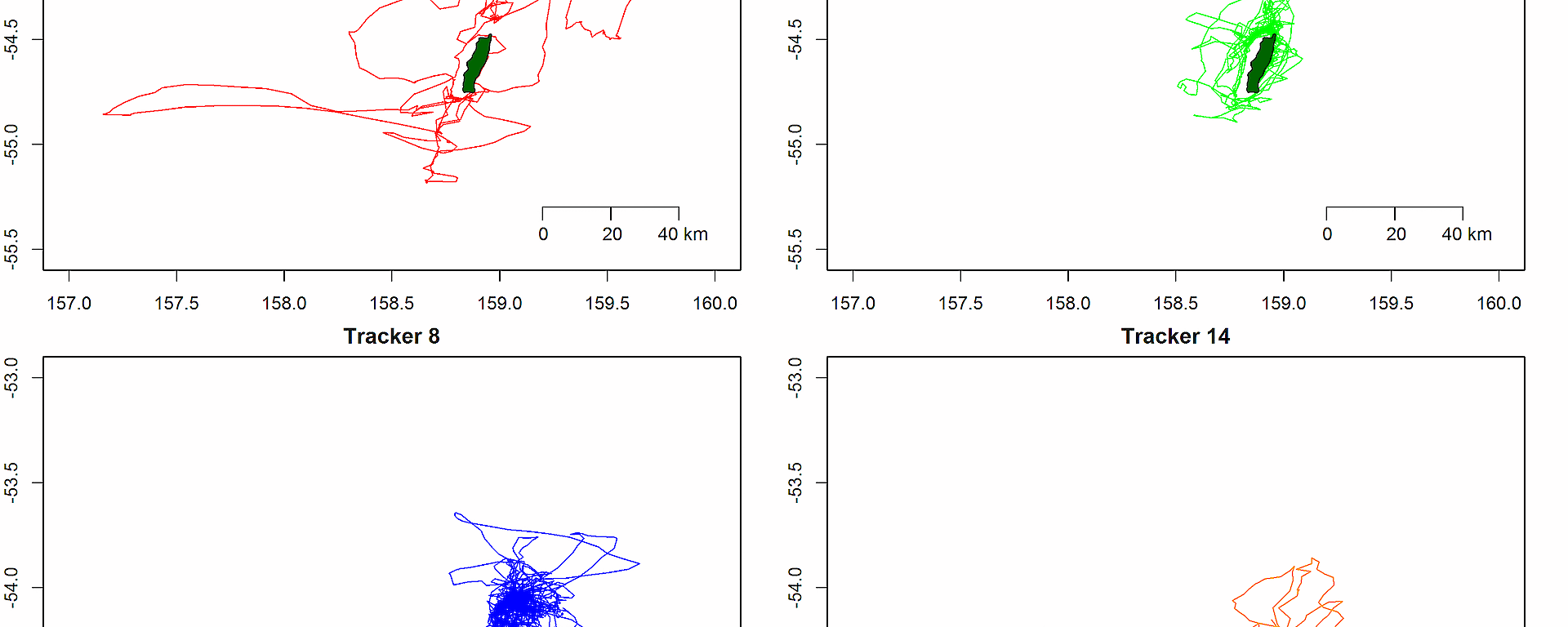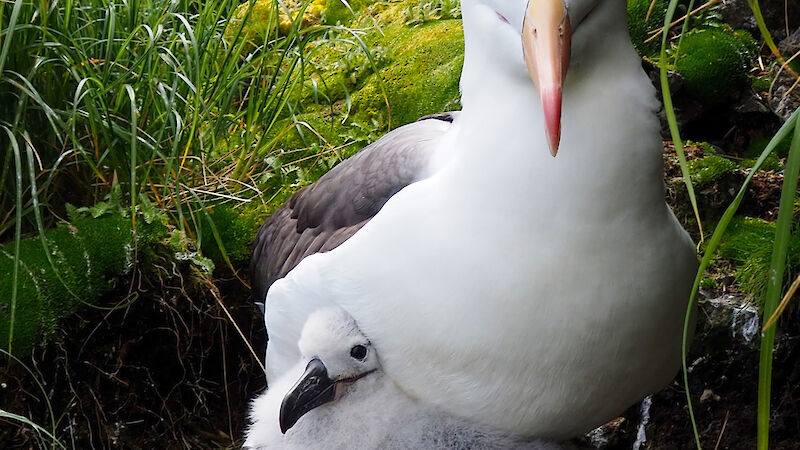Field biologists Kimberley Kliska and Penny Pascoe, successfully taped miniature GPS data loggers to the feathers on the backs of five birds. The data loggers remained on the birds for between five and 30 foraging trips.
The data was downloaded from the devices once they were retrieved, enabling the team to map the foraging locations of the birds.
“We found the birds forage locally, within 200 kilometres of Macquarie Island, during the egg incubation period, highlighting the importance of the marine protected area around Macquarie Island,” Ms Kliska said.
Approximately 40 pairs of black browed albatross breed on the steep slopes of the island and biologists regularly visit the colony to record the progress of the breeding season.
Chief Investigator* from the Tasmanian Department of Primary Industries, Parks, Water and the Environment, Dr Rachael Alderman, said the birds are threatened by fishing and climate change, on land and at sea.
“This is the first time such high resolution GPS tracking has been done on this population,” Dr Alderman said.
“We will try and collect more data over the coming seasons to understand how foraging distribution and behaviour is varying over time, what the environmental drivers are and, importantly, how these populations may be affected by climate change.”
The data from this and other long-term albatross studies is fed into the international Agreement on the Conservation of Albatrosses and Petrels, to inform conservation measures such as reducing seabird by-catch in fisheries. Australian sub-Antarctic fisheries are closed during summer, to avoid albatross when they are foraging close to shore to feed their chicks.
Corporate Communications
Australian Antarctic Division
*Australian Antarctic Science Project 4112



